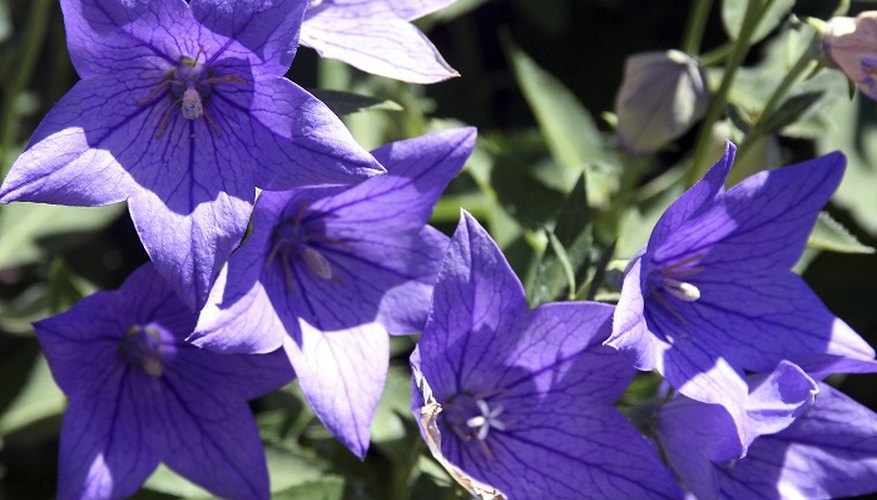Perennial balloon flowers -- Platycodon grandiflorus -- earn their name from their large, balloon-like flower buds. These flower buds open to reveal blue, pink or white star-shaped blossoms throughout the summer. Balloon flowers benefit from deadheading. This process removes the spent blossoms before they begin producing seed, encouraging the plant to produce more flowers. Deadleafing, or removing dead leaves, is closely related to deadheading and usually performed at the same time. Since balloon flowers bloom all summer long, they also benefit from severe deadheading and cutting back at mid-season, which encourages them to remain full and productive.
- Perennial balloon flowers -- Platycodon grandiflorus -- earn their name from their large, balloon-like flower buds.
- Since balloon flowers bloom all summer long, they also benefit from severe deadheading and cutting back at mid-season, which encourages them to remain full and productive.
Inspect the plants once a week during the flowering season. Look for wilting flowers and forming seed heads. Also examine the balloon flowers for dead or damaged leaves.
Grasp the stem under a spent or wilting blossom between your forefinger and thumb. Pinch off the blossom head with your fingers, 6.25 mm (1/4 inch) above the nearest set of leaves on the stem.
Trim off any dead or damaged leaves from the balloon flowers with a small pair of shears.
Cut back the balloon flowers to half of their previous height at midsummer if they are blooming less or looking unkempt. Flowering usually resumes within two weeks.
TIP
If you go on holiday or otherwise miss a few weeks of deadheading, cutting back the balloon flowers usually helps them return to abundant flowering, even if they have started seed production.
Leave a few flowers on the plant to set seed near the end of summer if you want to save some of the balloon flower seeds for further planting.
WARNING
Remove the dead leaves and flowers from the garden after deadheading. Not only are they unattractive, they can become a breeding ground for pests and disease.
